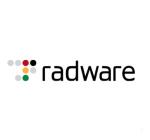What is our primary use case?
We currently use multiple Kemp appliances to load-balance the delivery of email to our CAS\Mailbox environment.
Previously, we had multiple CAS servers and Mailbox servers and Kemp was handling that environment greatly. We also used it to migrate to a Single CAS with multiple DAGs. The process was very simple on the Kemp side.
We also are using it to assist us with uptime due to any possible maintenance windows we have and/or any troubleshooting with the server environment. Kemp allows us to reboot servers and not affect mail delivery, as it will still deliver to a different node.
How has it helped my organization?
LoadMaster has greatly helped us with the uptime of our email services. If one server is having issues, it will still deliver to another server.
Using this product also made it easier to handle migrations to newer Exchange services because the product was the main point of communication, which meant that changes on the device affected everything. This made things simpler for us.
Not spending hours on troubleshooting issues, Kemp support resolved issues quickly.
What is most valuable?
The load-balancing is the biggest feature, of course. It just works. If one CAS goes down, Kemp will still deliver to the other server. It is the same with multiple mailbox servers. If one goes down then mail can still be delivered, due to the fact that Kemp is handling the communications.
Updates are easy to apply and don't cause downtime as long as you have two load-balancers.
The product also allows us to limit certain services on the Exchange server. Allows more control and Access Control Lists (ACLs) for internal and or external access. Instead of making changes in IIS on a server, you can have Kemp control it.
What needs improvement?
Obviously, there are a lot of moving parts and fields\settings on Kemp LoadMaster. Not all the settings are easily understandable. It would be helpful if there were a way to incorporate tooltips on the fields so that we don't have to dig through documentation.
I don't expect the software to assist in migrations, but it would be a plus if they had more documentation on Exchange migrations with Kemp and specific changes that need to be made. However, support is very knowledgeable and assisted us.
I would like to see an increase in the knowledge base on technical issues or common troubles.
Buyer's Guide
Kemp LoadMaster
April 2025
Learn what your peers think about Kemp LoadMaster. Get advice and tips from experienced pros sharing their opinions. Updated: April 2025.
849,190 professionals have used our research since 2012.
For how long have I used the solution?
We have been using Kemp LoadMaster for one year.
What do I think about the stability of the solution?
We have used the product for multiple years and haven't had any issues or outages from it, so downtime was never an issue.
What do I think about the scalability of the solution?
This product is highly scalable.
How are customer service and support?
Technical support is A+. They were great in our migration process and even went to assist us with questions that we had on Exchange.
Which solution did I use previously and why did I switch?
We did not use another similar solution prior to Kemp LoadMaster.
How was the initial setup?
The initial setup is straightforward.
What about the implementation team?
The vendor, Kemp, assisted us and they are very knowledgeable.
What was our ROI?
It has paid for itself after multiple years.
What's my experience with pricing, setup cost, and licensing?
Any decent product will cost money and if you want great support and a great product, then you will want to spend the money on it.
Which other solutions did I evaluate?
We did not evaluate other products before choosing this one.
Which deployment model are you using for this solution?
On-premises
Disclosure: I am a real user, and this review is based on my own experience and opinions.













Nil